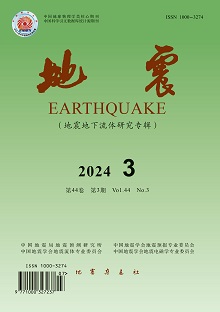几内亚湾和西非撒哈拉以南地区的构造活动:使用焦点机制解决方案对 Freeth(1977 年)进行验证
Q4 Earth and Planetary Sciences
引用次数: 0
摘要
从全球中心力矩张量项目目录中提取的 1979 年 1 月至 2016 年 12 月间 104 次 4.0 ≤ Mw ≤ 7.1 地震的断层平面解。用于研究几内亚湾地区的区域构造应力机制。其目的是验证 Freeth(1977 年)[1] 提出的膜构造理论,该理论以 Freeth(1977 年)[1] 为基础描述了几内亚湾和撒哈拉以南西非地区的构造。几内亚湾和撒哈拉以南西非地区的构造以非洲板块的运动为基础,我们强调使用严格的统计测试来决定应力张量反演分析所使用的地震焦点机制(FMS)的质量和可变性。为了限制我们的分析,我们在对从该地区获得的 FMS 进行应力张量反演分析时,同时应用了迈克尔算法和高斯技术,结果发现两者是一致的,并且相互之间有很好的一致性。迈克尔(1984 年)[2] 和 Zalohar 与 Vrabec(2007 年)[3] 的技术都表明,几内亚湾和西非撒哈拉以南地区的区域构造应力体系是伸展的,这与 Freeth(1977 年)[1] 的研究结果非常一致。然而,我们的调查得出结论,延伸应力机制的方向与非洲板块运动的方向一致,即向欧亚板块运动。本文章由计算机程序翻译,如有差异,请以英文原文为准。
Tectonic activity in Gulf of Guinea and Sub-Sahara West Africa: A validation of Freeth (1977) using focal mechanism solutions
Fault plane solutions for a group of 104; 4.0 ≤ Mw ≤ 7.1 earthquakes between January 1979 and December 2016, extracted from the Global Centroid Moment Tensor Project catalog. Were used to investigate the regional tectonic stress regime of the Gulf of Guinea region. The idea is to validate the theory of membrane tectonics put forward by Freeth (1977)[1] in which the tectonic of the Gulf of Guinea and the sub-Sahara West Africa region were described based on Freeth (1977)[1]. The tectonic of the Gulf of Guinea and the sub-Sahara West Africa region are based on the movement of the African plate, we emphasized the use of rigorous statistical tests to decide on the quality and variability of the earthquake focal mechanisms (FMSs) utilized for the stress tensor inversion analysis. To constrain our analysis, we have applied both the Algorithm of Michael and Gauss technique in our stress tensor inversion analysis of FMS obtained from the region, and the results are found to be coherent and in good agreement with each other. Both Michael (1984)[2] and Zalohar and Vrabec (2007)[3] techniques show that the regional tectonic stress regime of the Gulf of Guinea and the sub-Sahara West Africa is extensional, which is in good agreement with the work of Freeth (1977)[1]. However, our investigation concluded that the orientation of the extensional stress regime is the same as the orientation of the movement of the African plate, which is towards the Euro-Asia plate.
求助全文
通过发布文献求助,成功后即可免费获取论文全文。
去求助
来源期刊

地震
Earth and Planetary Sciences-Geophysics
CiteScore
0.60
自引率
0.00%
发文量
3214
期刊介绍:
Earthquake is a comprehensive academic journal hosted by the China Earthquake Network Centre (CENC) and edited by Mr. Wang Haitao, Director of CENC and a senior researcher. The purpose of the journal is to exchange research results on earthquake observation, earthquake precursors and strong earthquake mechanism and prediction, and to promote the exploration and research on earthquake forecasting and the application of its results in earthquake prevention and disaster reduction. The readers are mainly earthquake scientists and technicians engaged in the research of earthquake observation and analysis, earthquake precursor exploration, earthquake mechanism and prediction, as well as scientists and technicians in related scientific and technological fields.
Inclusion:
The Chinese core periodicals in the general list of the core periodicals
Chinese Science Citation Database (CSCD) Source Journals
Scopus (Netherlands) Source Journals
Japan Science and Technology Literature Database (JST) source journals
 求助内容:
求助内容: 应助结果提醒方式:
应助结果提醒方式:


